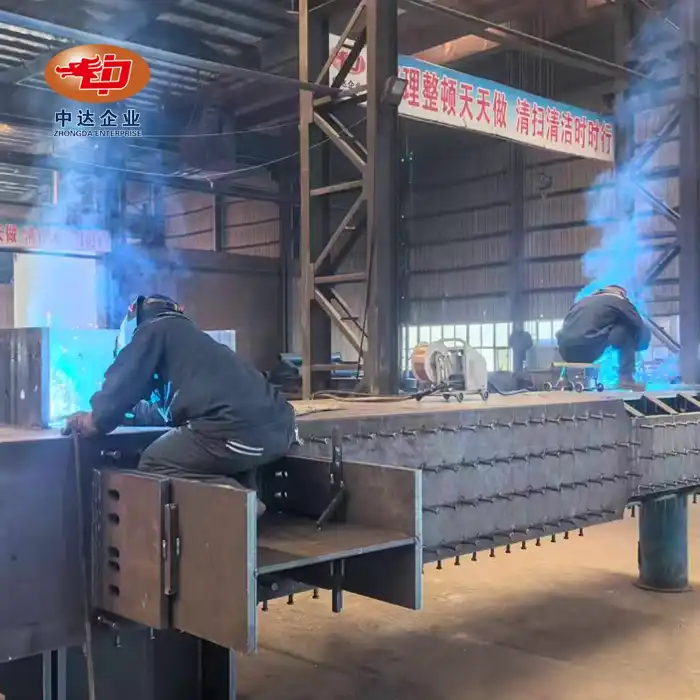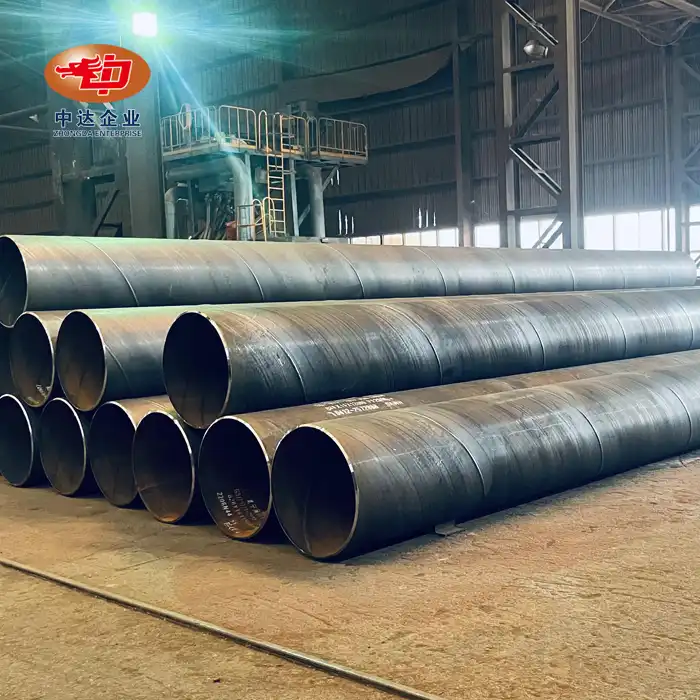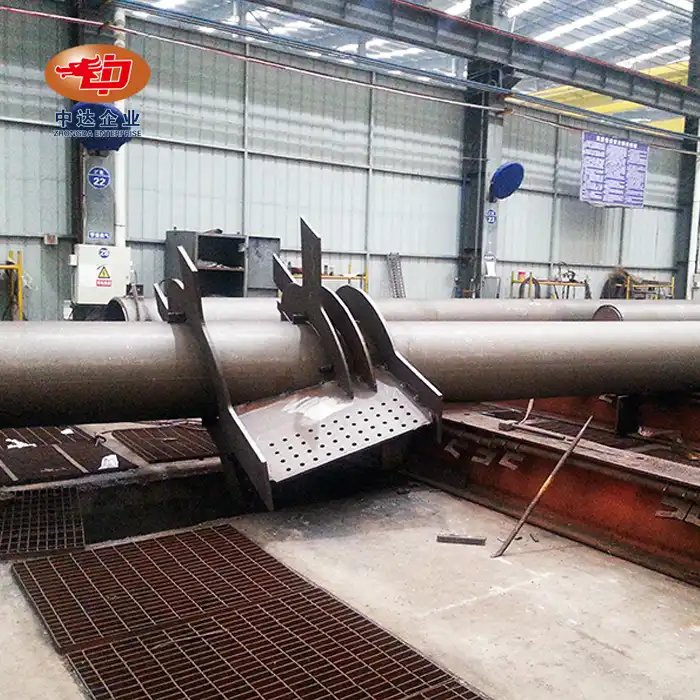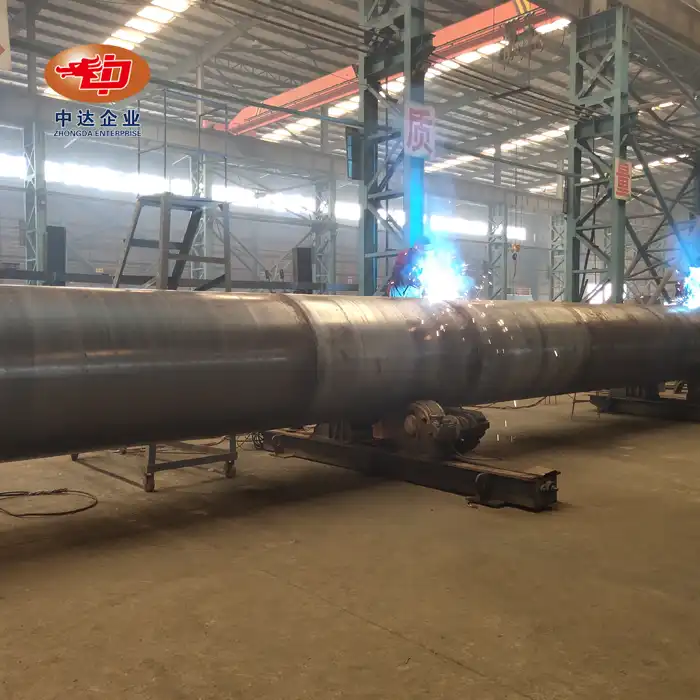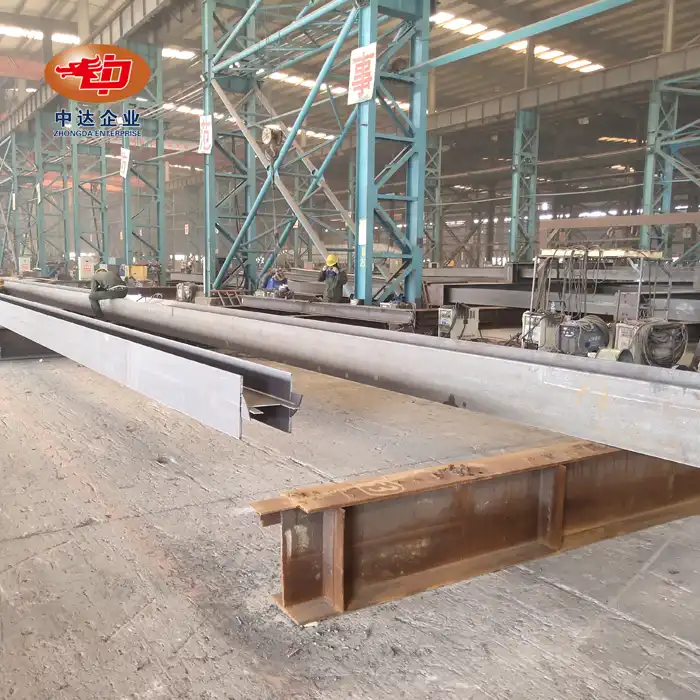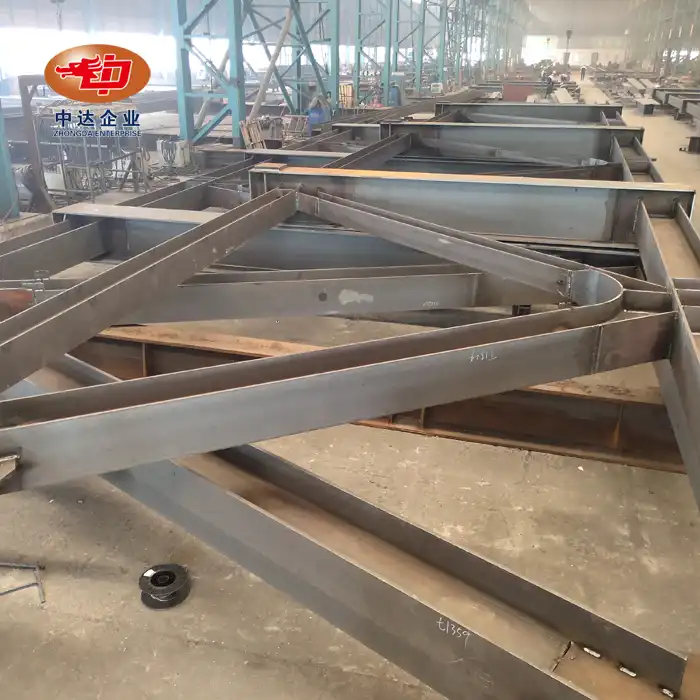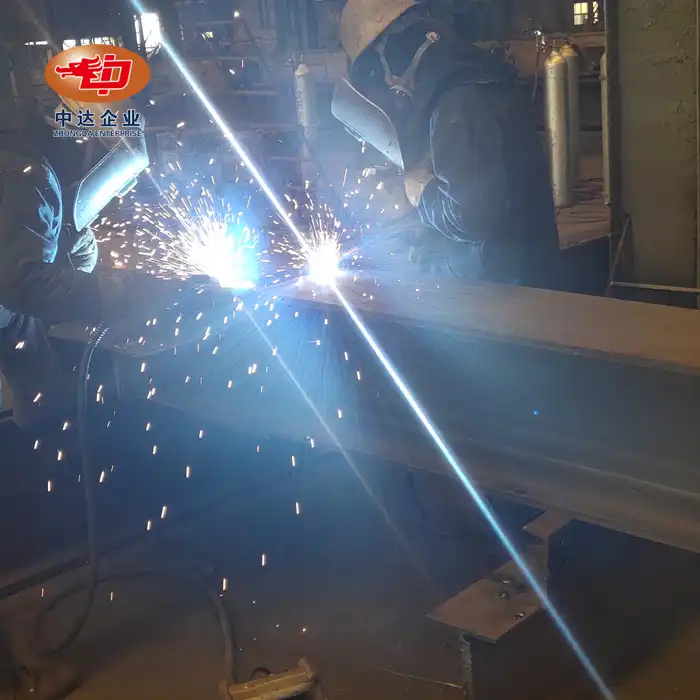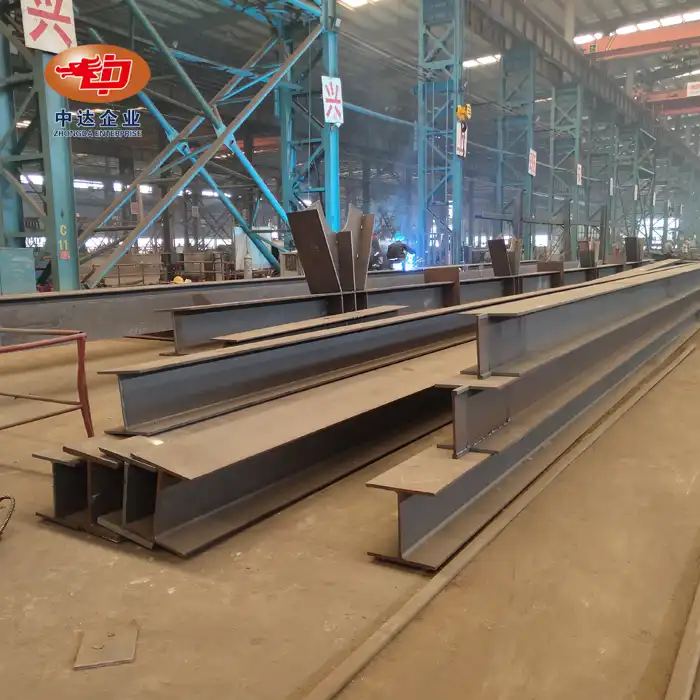Initial Construction Costs and Timeline
Material Costs
Steel frame construction often has a slight edge in material costs compared to concrete. In general, the price of steel is more steady and predictable, which makes budgeting easier. Steel is also stronger than it is heavy, which means that less material is needed overall. This could lower the costs of foundation and shipping. Concrete, while typically less expensive per unit, may require more volume and reinforcement, potentially offsetting its initial cost advantage.
Labor and Equipment Expenses
Steel frame construction typically requires fewer on-site workers and specialized equipment, which can lead to significant labor cost savings. Prefabricated steel components, like those produced by Zhongda Steel, arrive ready for assembly, streamlining the construction process. Concrete construction, on the other hand, often demands more on-site labor for formwork, pouring, and curing, which can increase overall project costs.
Construction Timeline
One of the most significant advantages of steel frame construction is its rapid assembly. With our advanced prefabrication techniques, steel structures can be erected much faster than concrete buildings. This speed not only cuts down on labour costs, but it also lets the building be occupied earlier and get its money back faster. Concrete buildings usually need more time to cure and are more likely to be delayed by bad weather, which could make projects take longer and cost more.

Long-Term Economic Considerations
Energy Efficiency
Steel frame buildings offer excellent opportunities for energy-efficient design. The flexibility of steel allows for easy integration of modern insulation systems and energy-saving features. At Zhongda Steel, we leverage our expertise in -60°C Weathering Steel Anti-corrosion Technology to create structures that perform exceptionally well in extreme environments. While concrete has good thermal mass properties, achieving comparable energy efficiency often requires additional insulation measures, potentially increasing costs.
Maintenance and Durability
Steel structures, when properly designed and protected, can offer exceptional durability with minimal maintenance. Our advanced anti-corrosion technologies ensure long-lasting performance even in harsh conditions. Concrete buildings, while durable, may require more frequent maintenance to address issues like cracking or spalling, particularly in industrial environments with exposure to chemicals or extreme temperatures.
Flexibility and Adaptability
Industrial needs often change over time, and steel frame buildings offer superior flexibility for future modifications or expansions. The inherent strength of steel allows for larger open spans and easier reconfiguration of interior spaces. This adaptability can lead to significant cost savings over the life of the building. Concrete structures, while sturdy, are generally more challenging and expensive to modify, potentially limiting future use options.
Environmental Impact and Sustainability
Material Production and Recycling
Steel remains one of the most sustainable building materials due to its high recyclability and minimal degradation through repeated reuse. At Zhongda Steel, we implement advanced manufacturing processes that reduce emissions and conserve raw materials. Our steel frame components can be recycled indefinitely, making them a circular resource. In contrast, concrete production emits more CO₂ and involves energy-intensive processes. While concrete can be crushed and reused as aggregate, its complete recyclability is limited and generally offers lower value in reuse cycles compared to steel.
Construction Waste
When combined with off-site prefabrication, steel building construction is a clear way to cut down on waste. Zhongda Steel's precise fabrication methods cut down on mistakes and extra material, making job areas leaner and cleaner. Unlike concrete, which often involves formwork, spillage, and overmixing on-site, steel assemblies arrive ready for installation, significantly lowering disposal needs. This streamlined approach reduces both environmental impact and project costs. Additionally, leftover steel scrap is easily collected and sent back into the recycling stream, unlike concrete debris, which is bulkier and harder to repurpose.
Building Lifespan and End-of-Life Considerations
Steel buildings are not only durable but also designed for efficient disassembly and repurposing. Zhongda Steel’s structures are engineered with modularity in mind, allowing for easier maintenance and future upgrades. When a steel structure reaches the end of its lifecycle, its components retain considerable material value and are readily recyclable. On the other hand, tearing down concrete buildings is harder and costs more, and usually requires a lot of work and heavy equipment. Their recovered material is also less useful and flexible, so it ends up in landfills instead of being used again in high-performance ways.

Conclusion
Both steel frame and concrete construction have their good points, but when you look at both the short-term and long-term costs, steel frame structures are usually the more cost-effective choice for commercial buildings. Steel is a great material for many business uses because it is flexible, doesn't need a lot of energy, and is easy to frame. Zhongda Steel has a lot of experience and uses the latest technology to give businesses all around the world high-quality steel solutions at reasonable pricing.
Contact Us
Ready to explore how our innovative steel frame solutions can benefit your next industrial project? Contact Zhongda Steel today at Ava@zd-steels.com to discuss your specific needs and discover how our expertise in precision steel structures can help you achieve your construction goals while optimizing costs and performance.
References
Johnson, A. R. (2021). Comparative Analysis of Steel and Concrete Structures in Industrial Applications. Journal of Construction Engineering, 45(3), 278-295.
Smith, B. T., & Brown, C. D. (2020). Life Cycle Cost Assessment of Industrial Buildings: Steel vs. Concrete. Sustainable Construction Review, 18(2), 112-130.
Zhang, L., et al. (2022). Energy Efficiency in Industrial Building Design: A Case Study of Steel Frame Structures. Energy and Buildings, 235, 110721.
Martinez, R. G., & Thompson, K. L. (2019). Environmental Impact of Construction Materials: A Comprehensive Review. Sustainability in Civil Engineering, 7(4), 405-422.
Wilson, E. J., & Davis, M. H. (2020). Adaptability and Flexibility in Industrial Architecture: Steel Frame Advantages. Architectural Engineering and Design Management, 16(5), 339-356.
Lee, S. K., et al. (2021). Cost-Benefit Analysis of Prefabrication in Industrial Construction: Steel vs. Concrete. Journal of Management in Engineering, 37(4), 04021026.











